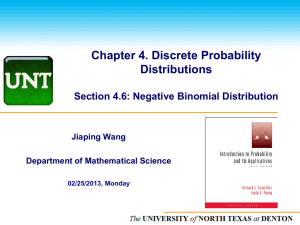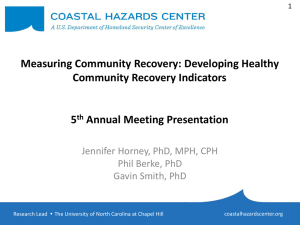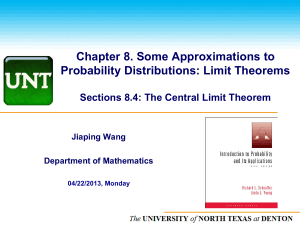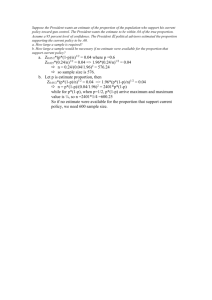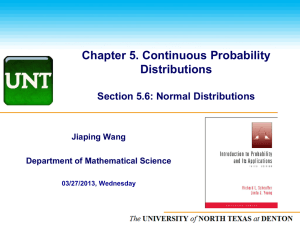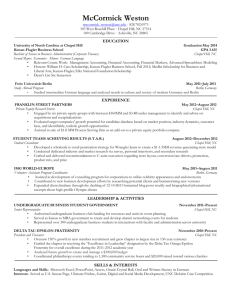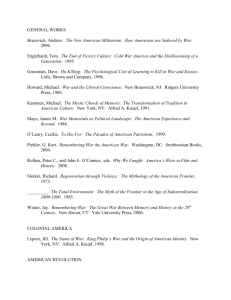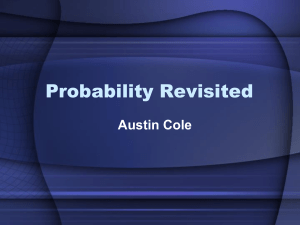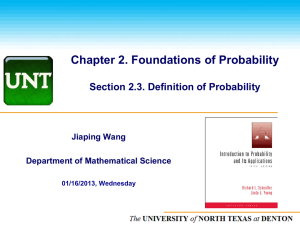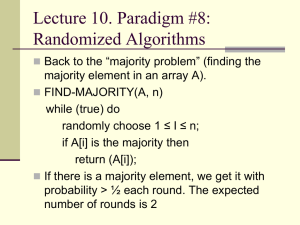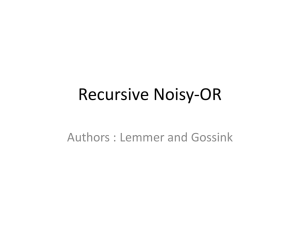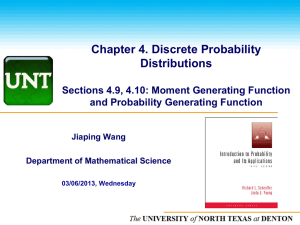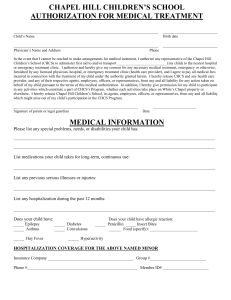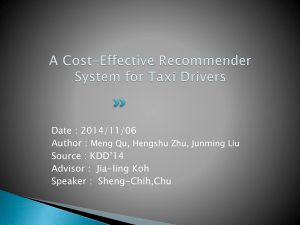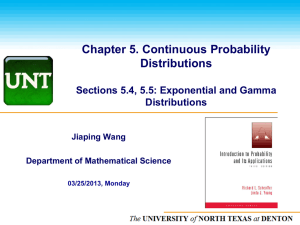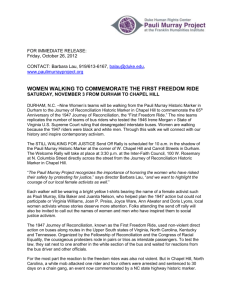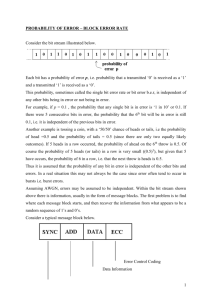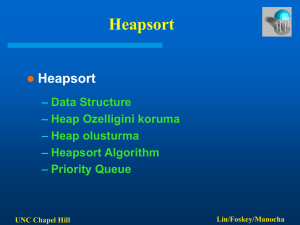ppt - Department of Mathematics
advertisement
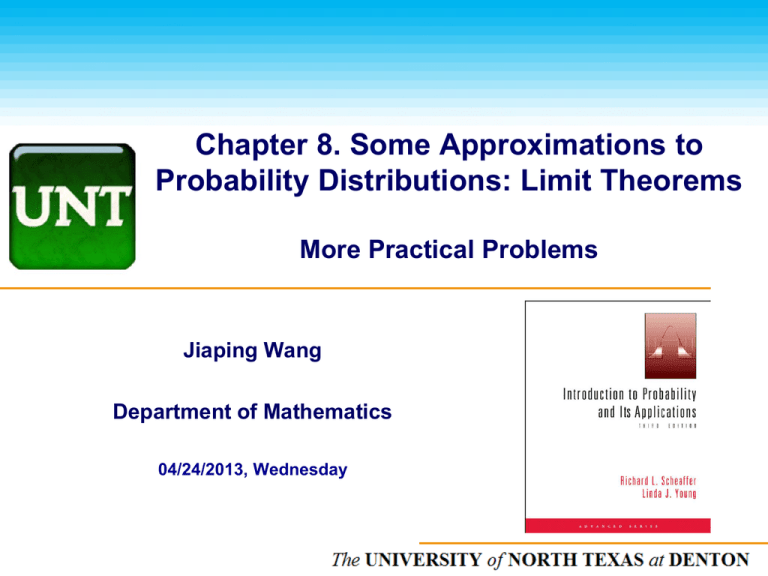
Chapter 8. Some Approximations to Probability Distributions: Limit Theorems More Practical Problems Jiaping Wang Department of Mathematics 04/24/2013, Wednesday The UNIVERSITY of NORTH CAROLINA at CHAPEL HILL Problem 1 Suppose we know in a crab farm, 20% of crabs are male. If one day the owner catches 400 crabs, what is the chance that more than 25% of the 400 crabs are male? Answer: p=0.2, n=400, x=25%(400)=100, np=0.2(400)=80, (np(1p))1/2=(400(0.2)(0.8))1/2=20(0.4)=8 P(X>100)=1-P(X≤100)=1-P[(X-μ)/(np(1-p))1/2≤(100+0.5- 80)/8]=1-P(Z≤2.56) =0.5-0.4948=0.0052. The UNIVERSITY of NORTH CAROLINA at CHAPEL HILL Problem 2 A process yields 10% defective items. If 100 items are randomly selected from the process, what is the probability that the number of defectives exceeds 13? Answer: p=0.1, n= 100, np=10, [np(1-p)]1/2=3, P(X>13)=1-P(X≤13)=1-P(Z≤(13+0.5-10)/3)=1-P(Z≤1.17)=0.5-0.379=0.121 The UNIVERSITY of NORTH CAROLINA at CHAPEL HILL Problem 3 In the United States, 1/6 of the people are lefthanded. In a small town (a random sample) of 612 persons, estimate the probability that the number of lefthanded persons is strictly between 90 and 150. Answer: p=1/6, n=612, np=102, [np(1-p)]1/2= 9.22, P(90<X<150)=P(X<150)-P(X≤90)=P(X≤149)-P(X≤90) =P[Z≤(149+0.5-102)/9.22]-P[Z ≤(90+0.5-102)/9.22] =P(Z ≤5.15)-P(Z ≤-1.25) =1-(0.5-0.3944)=0.8944. The UNIVERSITY of NORTH CAROLINA at CHAPEL HILL Problem 4 The weight of an arbitrary airline passenger's baggage has a mean of 20 pounds and a variance of 9 pounds. Consider an airplane that carries 200 passengers, and assume every passenger checks one piece of luggage. Estimate the probability that the total baggage weight exceeds 4050 pounds. Answer: μ=20, σ2=9, n=200, Tn=∑Xi, P(Tn>4050)=P(Tn/n>4050/200)=P(avg>20.25)=P(n1/2(avg-μ)/σ>(200)1/2(20.25-20)/3) =P(Z>1.18)=0.5-0.381=0.119. The UNIVERSITY of NORTH CAROLINA at CHAPEL HILL Problem 5 Let X be exponentially distributed with a mean of θ. Find the probability density function of the random variable Y=cX with some positive constant c. Identify the distribution of Y including the parameters. Answer: Y=cX is a monotone increasing function as c>0. The inverse function h(y)=y/c with its derivative h’(y)=1/c and the domain is (0,∞). Also the density function For X is f(x)=1/θe-x/θ for x>0. We can have 1 𝑦 1 1 𝑦 𝑓𝑌 𝑦 = 𝜃 exp − 𝑐𝜃 𝑐 = 𝑐𝜃 exp − 𝑐𝜃 , 𝑦 > 0 Which is an exponential distribution with mean cθ. The UNIVERSITY of NORTH CAROLINA at CHAPEL HILL Problem 6 Let the random variable X have the normal distribution with mean μ and variance σ2. Find the probability density function of Y=eX. Answer: 𝑓(𝑥) = 1 exp 𝜎 2𝜋 − 𝑥−𝜇 2𝜎2 2 . Y=eX is a monotone increasing function from 0 to ∞. The inverse function h(y)=ln(y) with derivative h’(y)=1/y. So 𝑓𝑌(𝑦) = 1 exp 𝜎 2𝜋 − ln(𝑦)−𝜇 2𝜎2 2 1 , 𝑦 𝑦 > 0. The UNIVERSITY of NORTH CAROLINA at CHAPEL HILL
